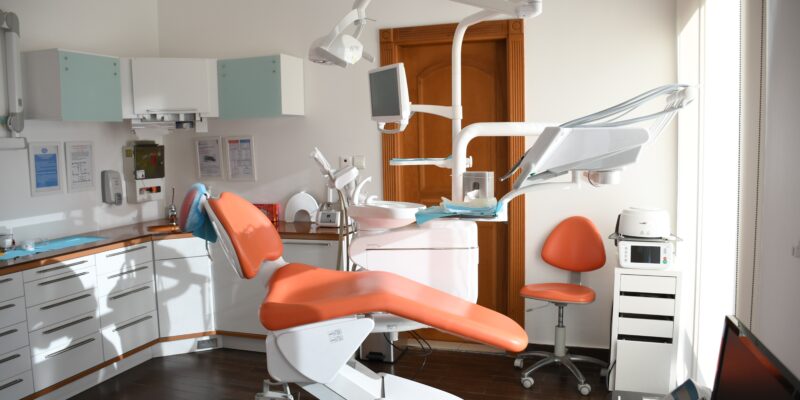We’ve all been there at some point. A sudden toothache in the middle of the night, a chipped tooth during a friendly game of frisbee, or even a child’s knocked-out tooth during a soccer match. All of these situations are not only stressful, but they also force us to seek emergency assistance immediately. But what are the costs of these unplanned and potentially painful dental visits?
What Are Dental Emergencies?
Dental emergencies involve teeth, gums, or mouth requiring immediate attention from a dental professional. Various factors, including accidents, injuries, infections, and sudden severe pain, can cause these emergencies. Dental emergencies can vary in severity, ranging from mild discomfort to situations that pose a significant risk to oral health and overall well-being.
Here are some examples of dental emergencies needing emergency dental assistance:
- Knocked-Out Tooth (Avulsed Tooth): If a tooth is completely knocked out, seeing a dentist as soon as possible is important. The chances of saving the tooth are highest within the first hour. Attempt to gently reinsert the tooth back into its socket, if possible, without touching the root. If not, store the tooth in milk or saliva and head to the dentist.
- Chipped, Fractured, or Broken Tooth: If a tooth is chipped, fractured, or broken, it can cause pain, sensitivity, and potential damage to the inner structures of the tooth. Collect broken pieces, rinse your mouth with warm water, and see a dentist promptly for evaluation and treatment.
- Severe Toothache: A severe, persistent toothache can indicate an underlying issue such as an abscess, infection, or dental decay. Rinse your mouth with warm water, gently floss around the tooth to remove any debris, and see a dentist to address the cause of the pain.
- Abscess or Dental Infection: An abscess is a pus-filled swelling that can occur at the root of a tooth. It often causes severe pain, swelling, and fever. Dental infections should be treated promptly to prevent the infection from spreading to other body parts.
- Loose or Dislodged Tooth: If a tooth becomes loose due to trauma or injury, gently reposition it back into its original place. Bite gently to keep it in position, and see a dentist immediately.
- Lost Filling or Crown: A lost filling or crown can expose the sensitive inner layers of the tooth, causing discomfort and sensitivity. See a dentist to replace the filling or crown to protect the tooth.
- Objects Stuck Between Teeth: If an object, such as a piece of food or a foreign object, gets stuck between teeth and causes pain or discomfort, try using dental floss to remove it gently. Avoid using sharp objects that could damage the gums or teeth.
- Injury to Soft Tissues: Injuries to the lips, cheeks, gums, or tongue can cause bleeding and pain. Rinse your mouth with warm water, apply a clean cloth or gauze to control bleeding, and seek medical attention if the bleeding is severe or doesn’t stop.
When replacing missing teeth, we often choose between implants vs dentures. While dentures are the more affordable option upfront, they can require more maintenance, including replacements, than dental implants. Dental implants offer a more permanent solution but have a higher initial cost. In the long run, considering dental implants’ lasting benefits could balance the cost.
Costs of Emergency Dental Services
- Variability: The cost of emergency dental services is not standardized and can vary considerably depending on several factors. These include the complexity of the procedure, the materials used, the dentist’s expertise, and the dental practice’s geographic location. For example, a simple procedure like re-cementing a crown might cost less than a more intricate root canal or surgical extraction.
- Type of Emergency: The nature of the dental emergency plays a significant role in determining costs. Basic procedures like fixing a chipped tooth or reattaching a lost filling are generally less expensive than complex treatments like oral surgeries or addressing extensive dental trauma.
- Geographic Location: Dental costs can vary based on the local cost of living and the demand for dental services in a particular area. Urban centers or regions with higher living costs may generally have higher dental service fees than rural areas.
- After-Hours and Weekend Fees: Dental emergencies can happen anytime, and some dental practices offer after-hours or weekend services. However, these services might come with additional fees to compensate for the inconvenience and to cover the costs of operating outside regular business hours.
- Materials Used: The quality of materials used in dental procedures can influence costs. For instance, using high-quality materials for fillings, crowns, or implants might result in higher upfront costs but can offer better durability and longevity.
- Facility and Equipment: Dental practices with advanced technology and well-equipped facilities might charge more for their services. The use of modern equipment can contribute to improved diagnosis, treatment accuracy, and patient comfort, which may be reflected in the overall cost.
- Dentist’s Expertise: The dentist’s experience, qualifications, and specialization can impact the cost of emergency services. Dentists with extensive training or specialized expertise might charge higher service fees.
Finding a trusted dentist is an integral part of maintaining good oral health. Trusted dentists are not only experts in their field but also prioritize their patient’s needs and work within their budgets. If you’re unsure where to start, a simple online search can lead you in the right direction. Click this link for more information on finding a reliable local dentist.
Benefits of Emergency Dental Services
- Immediate Relief: One of the most significant benefits of emergency dental services is their quick relief from pain and discomfort. Dental emergencies can be extremely distressing, and timely intervention provides immediate comfort.
- Prevention of Complications: Addressing a dental issue promptly can prevent it from escalating into a more complex and costly problem. Treating a minor cavity, for example, can prevent the need for a more invasive root canal procedure later on.
- Preservation of Oral Health: Emergency services aim to preserve the health and functionality of your teeth, gums, and oral structures. Timely treatment can help maintain the integrity of your smile and prevent further deterioration.
- Prevention of Infection: Certain dental emergencies, such as abscesses, can lead to serious infections if left untreated. Quick intervention not only alleviates pain but also prevents the spread of infection to other parts of the body.
- Peace of Mind: Knowing you have access to emergency dental care provides peace of mind. Dental emergencies can happen unexpectedly, and having a plan in place can help reduce anxiety and stress during such situations.
Dental Insurance and Coverage
- Coverage Variability: Dental insurance plans can differ significantly in terms of coverage for emergency dental services. Some plans might cover a percentage of the costs, while others might cover specific emergency treatments or none at all.
- Preauthorization: Certain insurance plans might require preauthorization for emergency procedures. This means you need approval from the insurance provider before receiving treatment. It’s important to familiarize yourself with any preauthorization requirements.
- Network Providers: Some dental insurance plans have a network of approved dentists. Visiting an in-network dentist might lead to better coverage, as out-of-network providers might incur higher out-of-pocket costs.
- Waiting Periods: Some dental insurance plans have waiting periods before certain treatments, including emergency services, are covered. This means that if you have a dental emergency shortly after enrolling in a new insurance plan, you might face limitations on coverage initially.
- Maximums and Deductibles: Dental insurance plans often have annual maximums (the maximum amount the insurance will pay in a year) and deductibles (the amount you must pay before insurance coverage starts). These factors can impact how much financial assistance you receive for emergency services.
- Alternative Financing: If your insurance doesn’t cover the full cost of emergency dental services, many dental practices offer financing options, such as payment plans or credit programs, to help you manage the expenses over time.
Conclusion
Emergency dental services, while potentially daunting and costly, are a lifeline when faced with sudden dental problems. Most importantly, maintaining good dental health and regular check-ups can help to prevent these emergencies altogether. Therefore, while avoiding regular dental visits might seem like a cost-saving tactic, it can cost you more in the long run if a dental emergency arises.
Neglecting oral health is never a wise decision, but what happens when we don’t have a choice and an emergency occurs? That’s when knowing your dental insurance coverage, understanding the costs involved, and having a trusted dentist’s contact could make a difference. Stay proactive, stay informed, and remember your oral health is vital.




